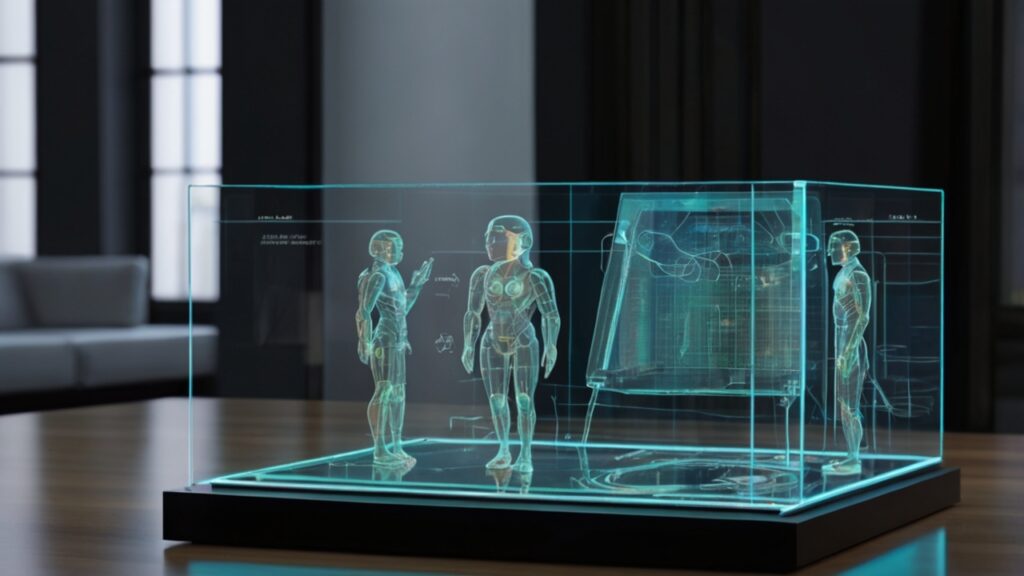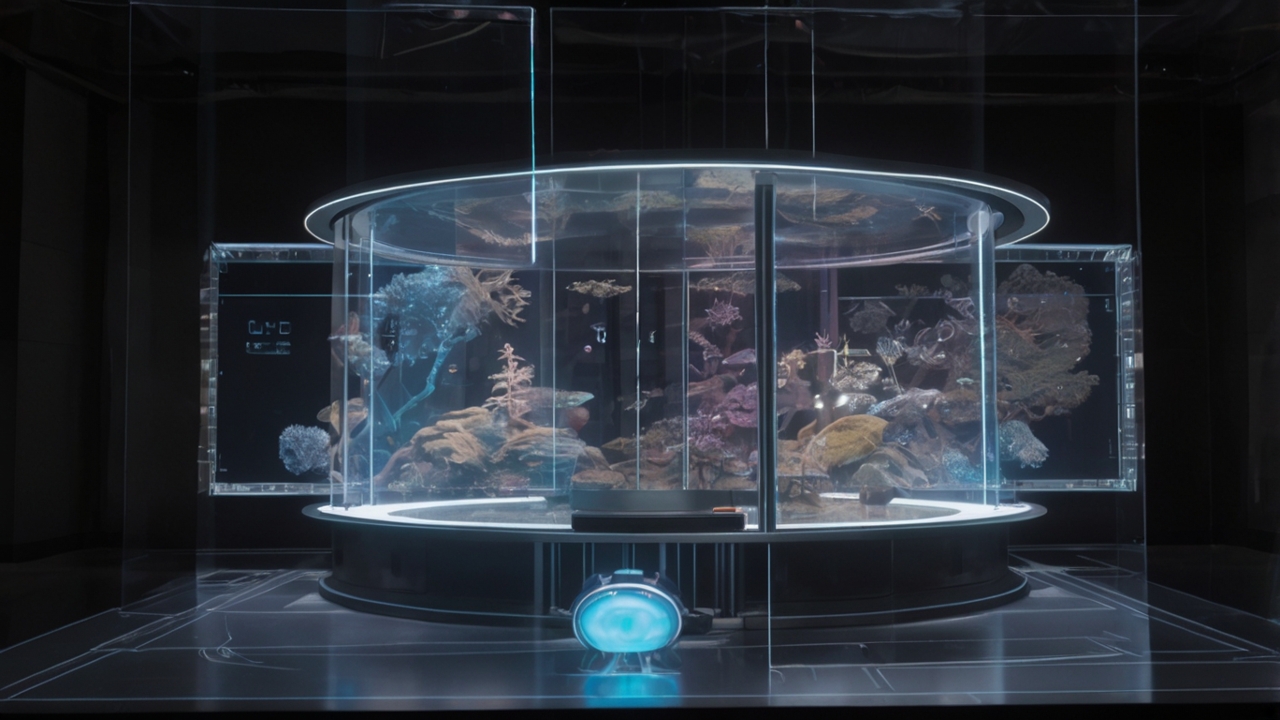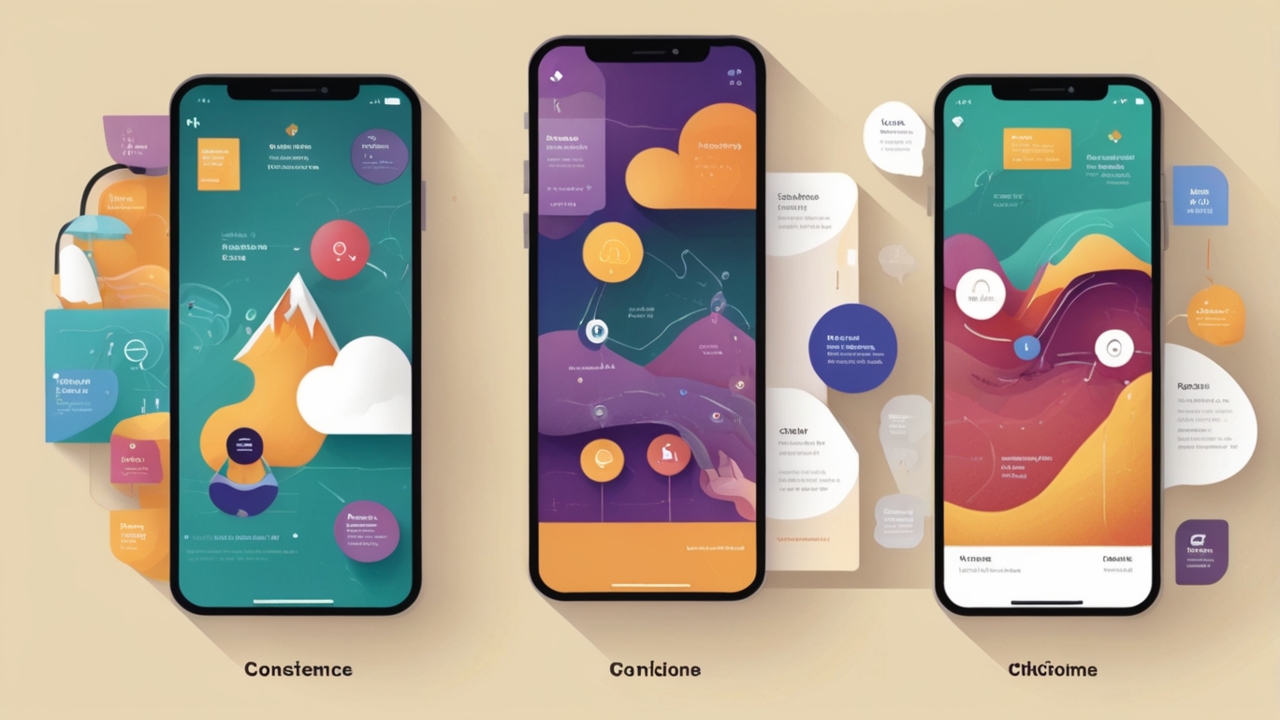Mayumiotero – For decades, Holographic Displays existed only in science fiction from Star Wars to Iron Man. Today, that fantasy is turning into reality. What once seemed impossible now defines the cutting edge of visual technology. The transformation happened gradually, combining human imagination, optical science, and digital innovation.
As someone fascinated by technology, I see this evolution as a symbol of human persistence. It reflects our desire to turn imagination into something tangible light itself sculpted into form.
“Read also: The Tech Industry’s Turnaround Moment“
What Makes a Display Truly “Holographic”
To understand the power of Holographic Displays, we must first grasp how they differ from ordinary screens. Traditional 3D displays only simulate depth. In contrast, holography reconstructs real light waves, allowing our eyes to perceive depth naturally.
This effect comes from interference and diffraction two principles that enable light to be reshaped into a 3D image. Because of this, you can view a hologram from any angle, just like a real object. As a result, holographic visuals feel alive, not projected. That’s why this technology has such a unique emotional impact on viewers.
From Laboratory to Living Room: A Brief History
The story of holography began in the 1940s when Dennis Gabor, a Hungarian-British physicist, introduced wavefront reconstruction. His discovery earned him a Nobel Prize years later. Yet, the technology didn’t flourish until lasers appeared in the 1960s.
Over the following decades, holography evolved from static laboratory images to dynamic 3D projections. Modern advances in AI rendering, optical chips, and photonics have made this once-distant dream attainable. Companies like Looking Glass Factory, Sony, and Holoxica now lead the way in commercial holographic products.

The Science Behind the Magic
At its core, a hologram manipulates light to create depth. Most Holographic Displays use spatial light modulators (SLMs) that precisely control laser beams. These modulators adjust each light wave’s angle and intensity to form realistic 3D visuals.
Today’s systems go a step further. They use AI algorithms to compute light behavior in real time, producing smoother, more detailed holograms. Some even rely on volumetric projection, scattering light through microscopic particles suspended in the air.
In essence, holography transforms physics into poetry bending light to create emotion, presence, and meaning.
Where Holographic Displays Are Changing the World
The applications of Holographic Displays extend far beyond entertainment. In healthcare, doctors can visualize patient anatomy in 3D before performing surgery. In education, teachers use holographic models to make lessons interactive and unforgettable.
Retail and advertising also benefit. Brands like Nike and Samsung use holograms for virtual product showcases. Meanwhile, in defense and architecture, holographic mapping helps teams plan missions or design cities with greater accuracy.
These examples prove that holography is not just eye-catching it’s transformative. It enhances how people learn, shop, and make decisions.
AI and Mixed Reality: The Next Frontier
Artificial Intelligence has become a crucial partner in advancing holographic technology. It predicts how light behaves, optimizes rendering, and reduces energy consumption. As AI grows more capable, holograms become smoother, clearer, and more dynamic.
At the same time, holography is merging with Augmented Reality (AR) and Virtual Reality (VR) to form Mixed Reality (MR) experiences. Tools like Microsoft HoloLens and Meta’s Project Nazare allow users to interact with 3D holograms in real environments. This combination marks a new era where imagination meets practical design.
“Read also: Google’s DeepSomatic: A Leap Toward Precision Cancer Detection“
Challenges Standing in the Way
Despite its progress, Holographic Displays still face obstacles. Production costs are high, energy requirements are significant, and devices remain bulky. Creating real-time 3D visuals demands immense computing power, which makes large-scale deployment difficult.
However, hope is on the horizon. With the rise of micro-LEDs, quantum dots, and photonic chips, holography will soon become more efficient and affordable. In my opinion, these breakthroughs will push holography toward the same mainstream adoption that flat screens once enjoyed.
The Cultural and Emotional Power of Holography
Technology aside, holography also carries emotional weight. It touches something deeply human our longing to connect beyond physical boundaries. Holographic concerts, like those of Tupac or Whitney Houston, demonstrate how the technology can preserve art and memory.
On a personal level, I see holography as a bridge between nostalgia and innovation. It lets us revisit the past while stepping boldly into the future. This emotional depth is what separates it from other visual media.
The Road Ahead: A Holographic Future
Looking forward, holographic technology is poised to enter our daily lives. Imagine smartphones projecting 3D objects above their screens or architects designing buildings that rise virtually from tablets. These scenarios are no longer fantasy they’re within reach.
Tech giants are investing heavily in photonic computing and AI-driven projection systems. Soon, holographic visuals could become as common as touchscreens. Still, its success will depend on more than visual realism; it must enhance how people communicate, learn, and feel.



